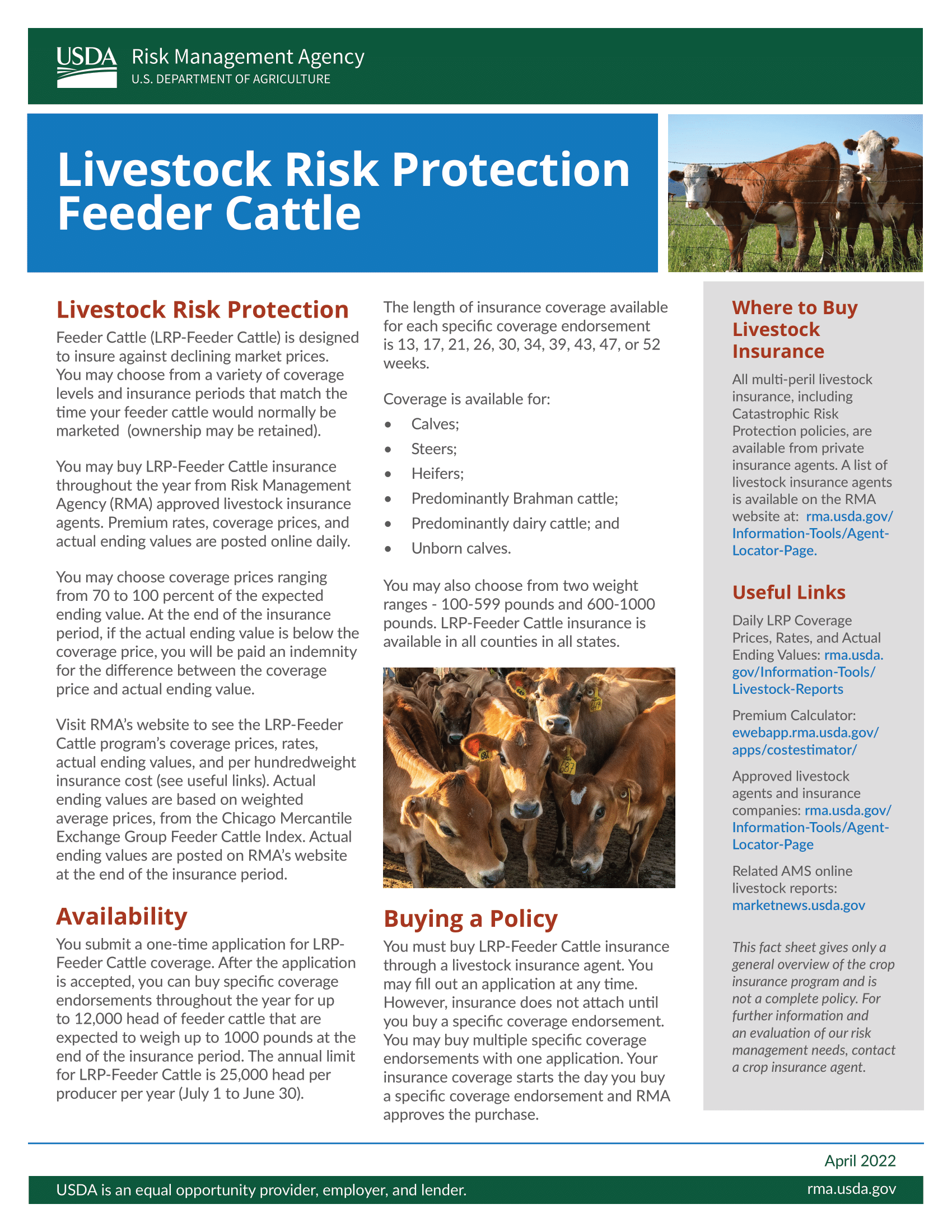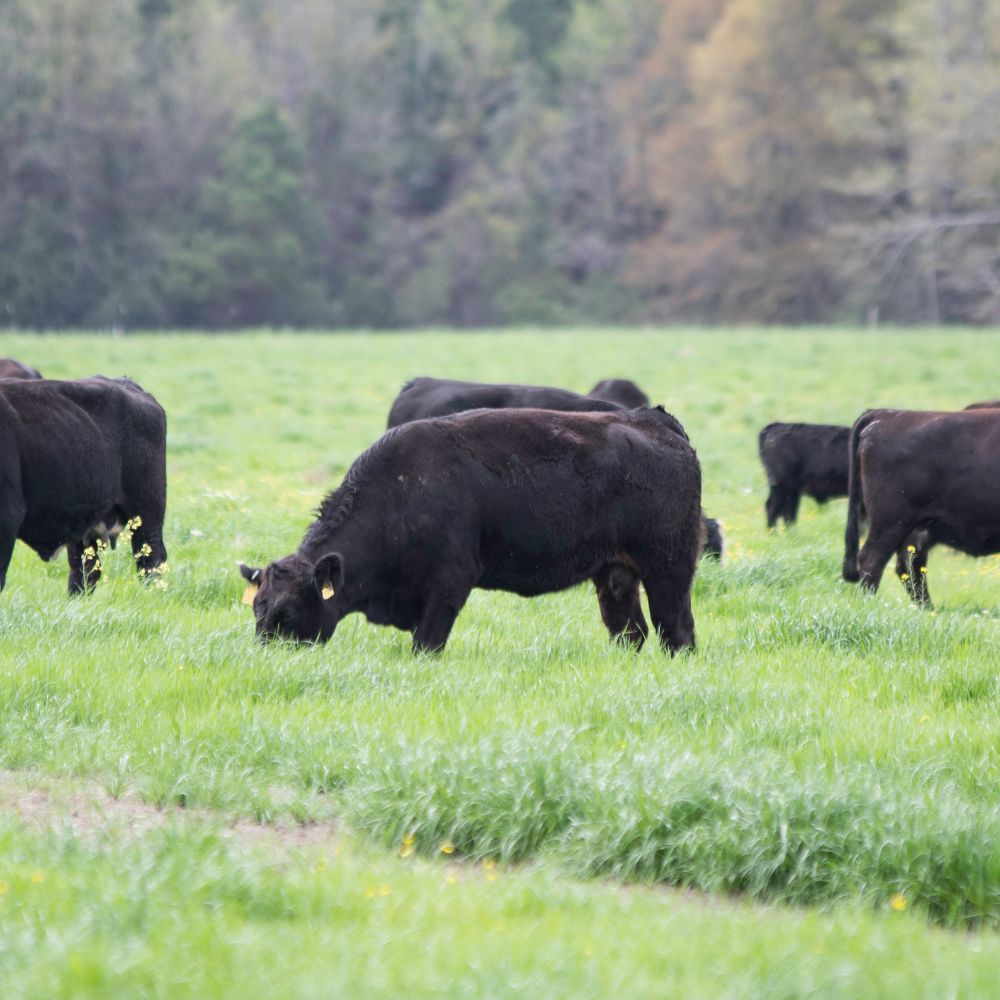Navigating Service Risks with Bagley Risk Management
Navigating Service Risks with Bagley Risk Management
Blog Article
Recognizing Livestock Risk Security (LRP) Insurance Coverage: A Comprehensive Overview
Navigating the realm of livestock threat security (LRP) insurance policy can be an intricate venture for many in the farming field. From how LRP insurance coverage operates to the various coverage options readily available, there is much to reveal in this comprehensive overview that might potentially form the way livestock producers come close to danger management in their services.

How LRP Insurance Functions
Sometimes, recognizing the mechanics of Livestock Danger Security (LRP) insurance policy can be complex, but breaking down exactly how it functions can provide clearness for ranchers and farmers. LRP insurance policy is a risk monitoring tool designed to protect livestock producers against unforeseen rate decreases. It's crucial to keep in mind that LRP insurance policy is not a revenue guarantee; rather, it concentrates solely on price danger defense.
Qualification and Protection Options

When it comes to coverage options, LRP insurance policy provides manufacturers the adaptability to select the insurance coverage degree, coverage duration, and recommendations that best match their risk administration requirements. Coverage levels commonly range from 70% to 100% of the anticipated finishing value of the insured animals. Producers can likewise pick coverage durations that line up with their production cycle, whether they are guaranteeing feeder cattle, fed livestock, swine, or lamb. Recommendations such as price danger security can further personalize protection to shield versus adverse market fluctuations. By comprehending the qualification standards and protection choices readily available, livestock manufacturers can make enlightened choices to take care of threat efficiently.
Advantages And Disadvantages of LRP Insurance Policy
When assessing Livestock Threat Security (LRP) insurance, it is vital for livestock manufacturers to evaluate the advantages and drawbacks integral in this threat administration device.

One of the primary benefits of LRP insurance coverage is its capacity to give security versus a decline in livestock prices. In addition, LRP insurance policy uses a degree of flexibility, allowing manufacturers to personalize insurance coverage levels and plan durations to suit their particular requirements.
One restriction of LRP insurance is that it does not secure against all types of risks, such as disease break outs or all-natural catastrophes. It is important for producers to thoroughly examine their private threat exposure and this hyperlink financial circumstance to identify if LRP insurance coverage is the appropriate threat monitoring tool for their procedure.
Recognizing LRP Insurance Policy Premiums

Tips for Making Best Use Of LRP Perks
Maximizing the advantages of Livestock Threat Protection (LRP) insurance calls for critical planning and aggressive threat administration - Bagley Risk Management. To make the most of your LRP coverage, take into consideration the following tips:
Consistently Analyze Market Conditions: Keep notified regarding market fads and price changes in the livestock industry. By checking these elements, you can make informed decisions concerning when to acquire LRP insurance coverage to shield against potential losses.
Set Realistic Coverage Degrees: When selecting coverage levels, consider your manufacturing expenses, market price of livestock, and prospective threats - Bagley Risk Management. Setting realistic coverage levels makes sure that you are properly secured without overpaying for unnecessary insurance
Expand Your Coverage: Instead of depending solely on LRP insurance, think about expanding Your Domain Name your risk monitoring techniques. Incorporating LRP with various other risk administration tools such as futures agreements or choices can supply extensive insurance coverage against market unpredictabilities.
Testimonial and Change Coverage Routinely: As market problems alter, occasionally assess your LRP protection to guarantee it lines up with your existing danger exposure. Readjusting coverage levels and timing of acquisitions can help optimize your danger protection method. By complying with these suggestions, you can optimize the benefits of LRP insurance policy and protect your livestock procedure versus unpredicted dangers.
Conclusion
In final thought, livestock danger defense (LRP) insurance coverage is a valuable tool for farmers to take care of the monetary threats connected with their animals operations. By recognizing exactly how LRP functions, eligibility and protection alternatives, in addition to the advantages and disadvantages of this insurance, farmers can make educated choices to safeguard their source of incomes. By thoroughly considering LRP costs and executing approaches to optimize advantages, farmers can reduce prospective losses and make certain the sustainability of their operations.
Livestock producers interested in acquiring Animals Threat Defense (LRP) insurance can check out a variety of qualification standards and insurance coverage options tailored to their particular livestock procedures.When it comes to insurance coverage alternatives, LRP insurance policy uses manufacturers the adaptability to pick the protection level, protection period, and recommendations that finest fit their danger administration needs.To understand the ins and outs of Livestock Risk Security (LRP) insurance policy fully, understanding the elements affecting LRP insurance policy premiums is crucial. LRP insurance premiums are determined by various elements, consisting of the protection level selected, the expected rate of livestock at the end of the coverage duration, the kind of livestock being insured, and the size of the protection period.Review and Adjust Insurance Coverage Routinely: As market conditions alter, regularly evaluate your LRP coverage to ensure it aligns with your existing danger exposure.
Report this page